Blog
Learning is the first step towards being a climate hero
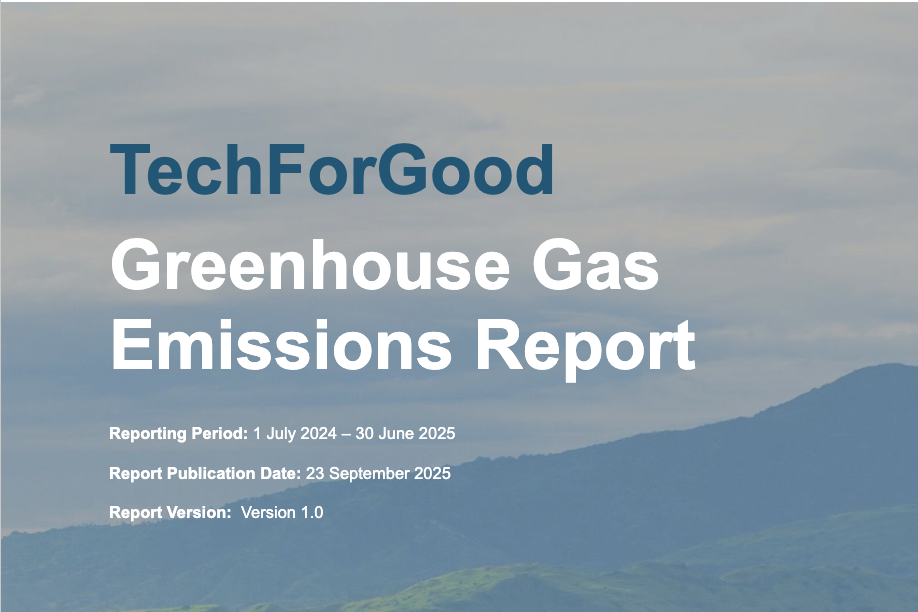
How Tech for Good Turns Australian Social Procurement Mandates into a $4.74M Client Saving Powered by NetNada's Auditable Carbon Data
"I managed to give you all of my data within less than a week. We turned it around... and it's done in a published and credible way. I personally think that's great value."— Stella Heesom, Founder of Tech for Good
Read post
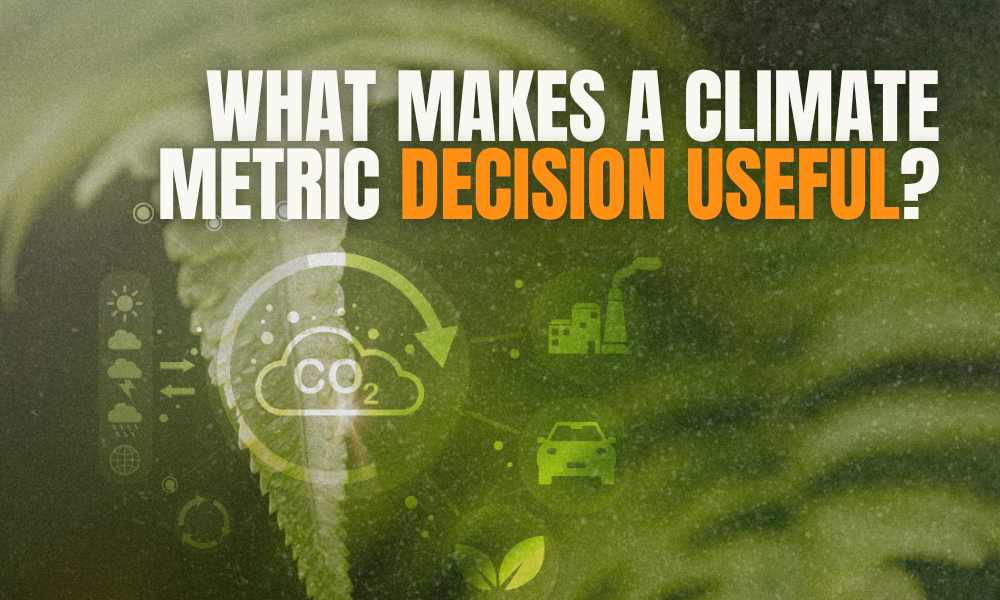
What Makes a Climate Metric ‘Decision-Useful’? A Practical Guide to AASB S2 Climate Reporting
Getting your climate-related disclosures right under AASB S2 doesn’t mean collecting more data—it means collecting the right data, and making sure it tells a story that’s relevant, strategic, and actionable.
Read post
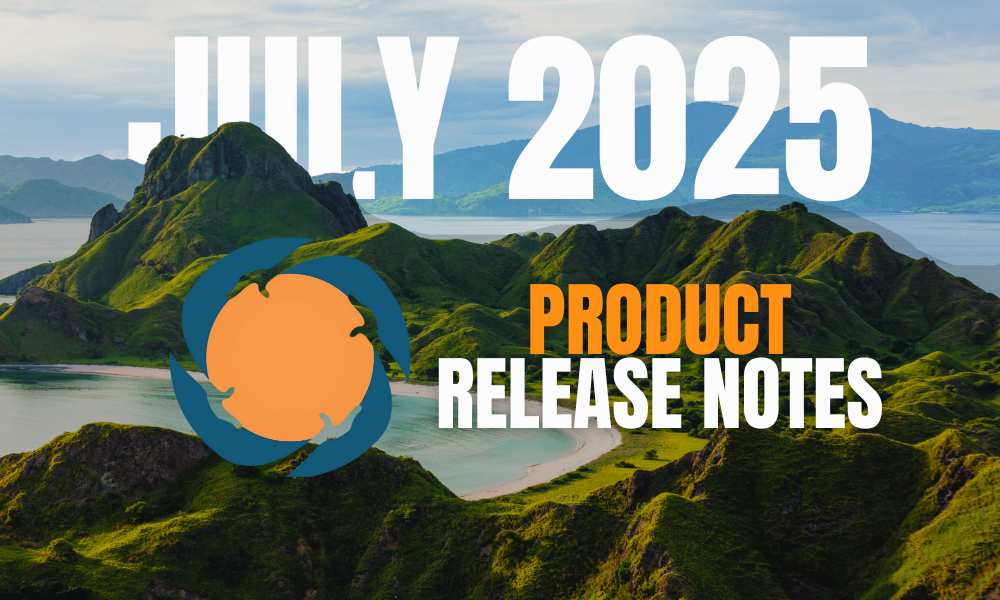
NetNada - July 2025 Product Release Updates
July 2025 Updates on NetNada Product. We cover new AI usages, faster documentation and data ingestion, and updated emission factors.
Read post
Applying for the NSW Net Zero Planning Grant
Learn everything you need to know before applying to the 30,000AUD NSW Net Zero Planning Grant. How to apply. What qualifies as a consultant. Understand the 2 grant milestones.
Read post
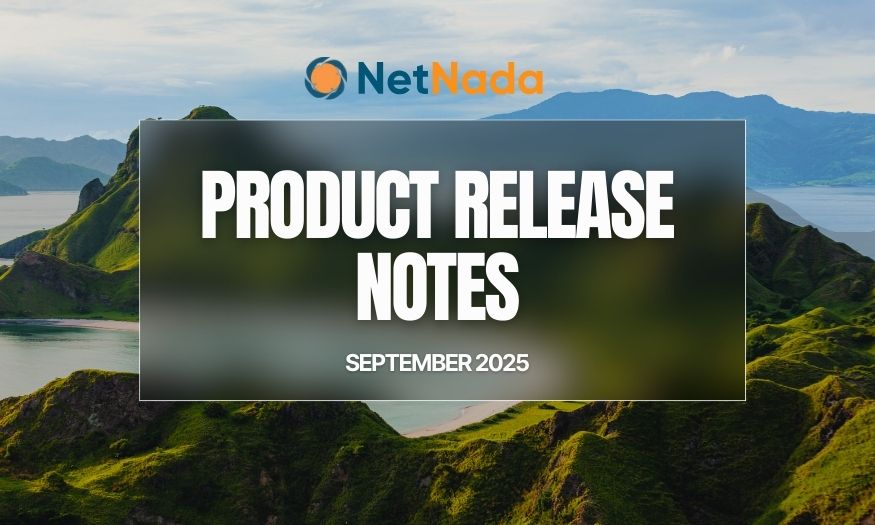
NetNada - September 2025 Product Release Updates
We're excited to introduce a suite of updates that will streamline your process and provide greater control and confidence in your carbon data.
Read post
Impact of Inflation and Currency Exchange in Carbon Accounting: Complete Guide
Spend-based analysis is a common method for calculating emissions from purchased goods and services. However, companies need to take into account emission factor year of publishing and currency exchange between the base currency and the emission factor.
Read post
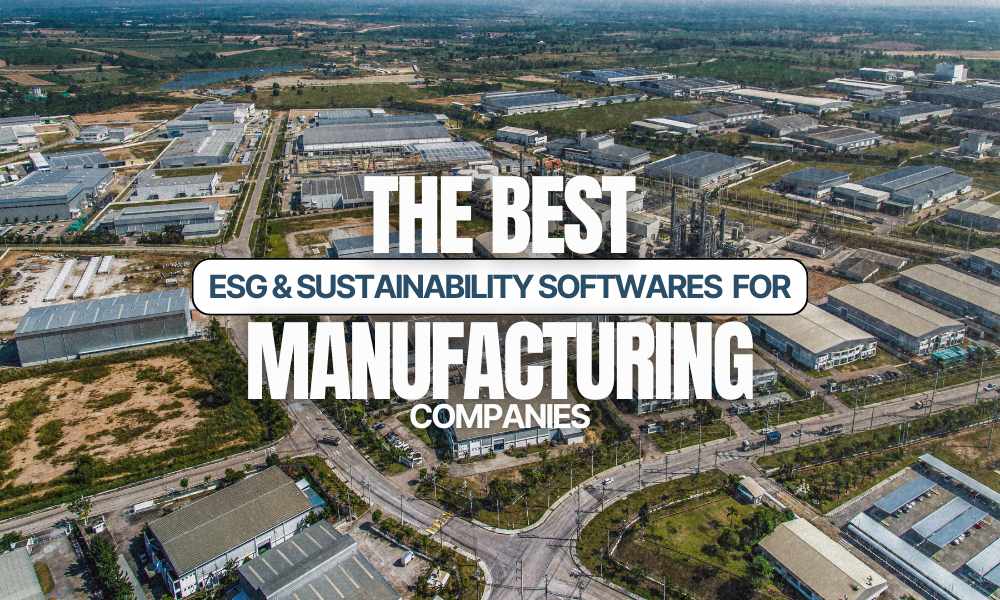
Best Sustainability & ESG Reporting Software for Manufacturing Companies in 2025
Manufacturing businesses need more than spreadsheets to meet today’s sustainability demands. The right ESG reporting software will empower you to monitor performance across sites, engage your suppliers, and stay compliant with evolving climate regulations.
Read post
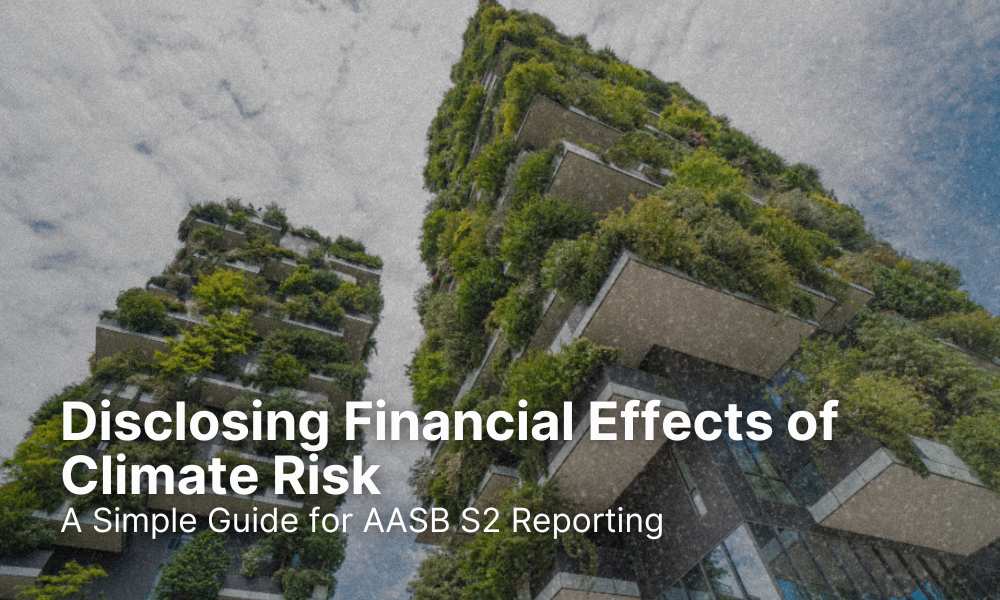
Disclosing Financial Effects of Climate Risk: A Simple Guide for AASB S2 Reporting
Disclosing the financial effects of climate risk isn’t about perfect modelling, it’s about building transparency, accountability, and resilience. AASB S2 is pushing companies to think differently about climate and finance, and early movers will gain trust and credibility with stakeholders.
Read post

Simplifying Scenario Analysis Under AASB S2
When done well, scenario analysis becomes more than just a compliance task. It’s a strategic advantage that helps future-proof your business in the face of uncertainty.
Read post
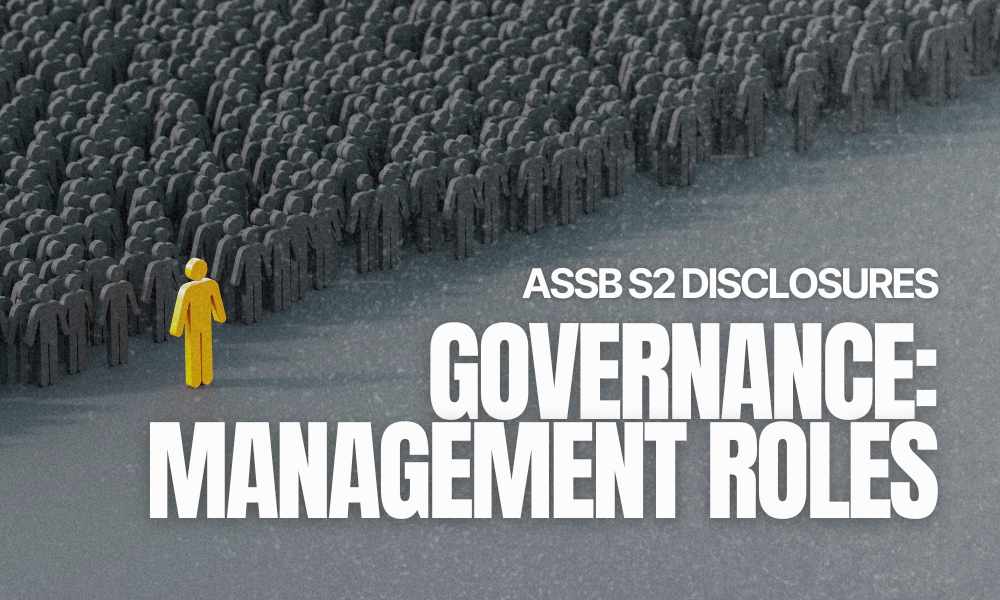
Governance in AASB S2 – Management Roles: Turning Climate Strategy into Business Action
This blog explores the essential role of management in operationalising climate governance. We’ll unpack what AASB S2 expects, how organisations can report on management roles and responsibilities, and why embedding climate into everyday operations makes all the difference.
Read post
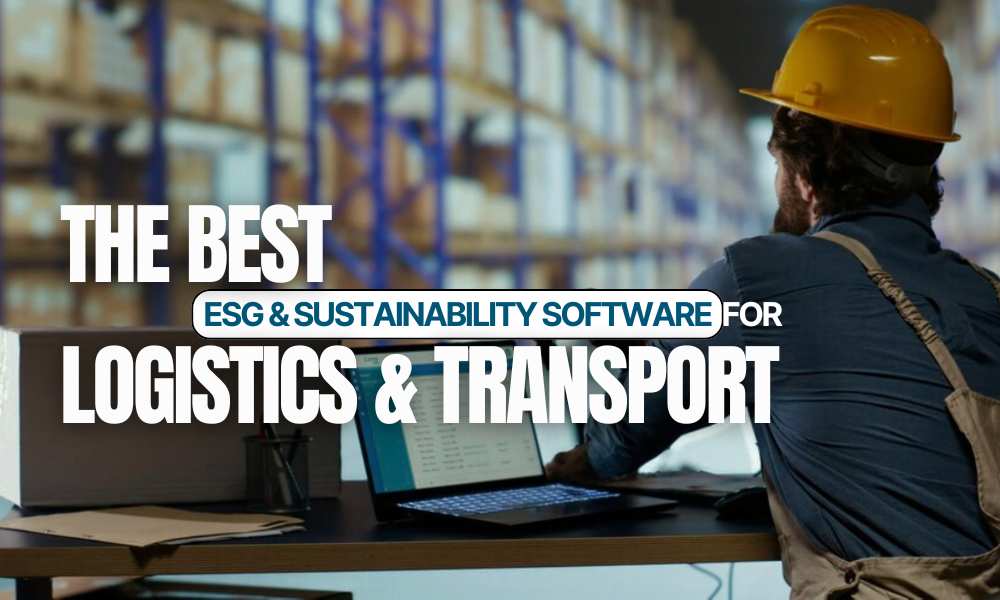
Best Sustainability Reporting Software for Logistics & Transport Companies
As global regulations tighten and supply chains come under increasing scrutiny, logistics and transport companies are being called to do more than just deliver goods, they must also deliver on climate accountability.
Read post
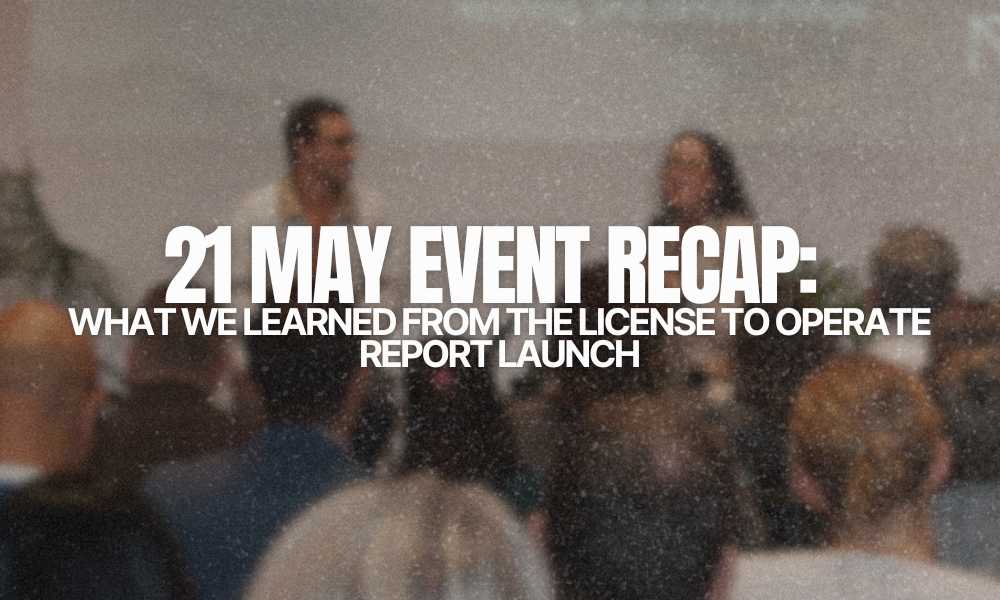
Recap: License to Operate Report Launch Event
From the start, one thing was clear: companies may be getting better at tracking emissions, but when it comes to governance, strategy, and leadership engagement, there’s still a long way to go.
Read post
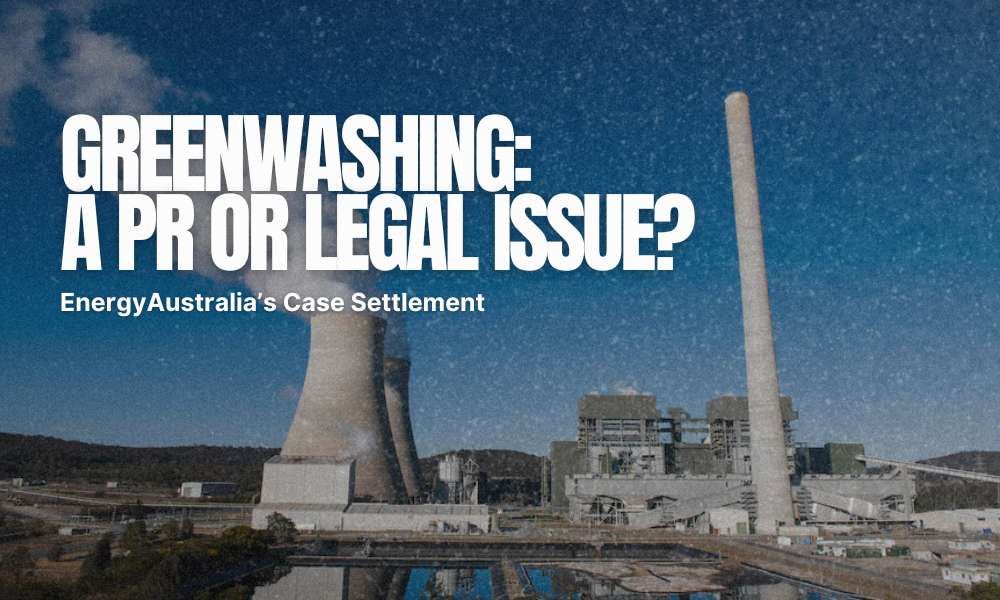
PR or Legal Issue? EnergyAustralia’s Greenwashing Case Settlement
In a major development that’s sending ripples across Australia’s corporate and sustainability sectors, EnergyAustralia has admitted to misleading customers about its carbon offset program and settled a landmark greenwashing case.
Read post
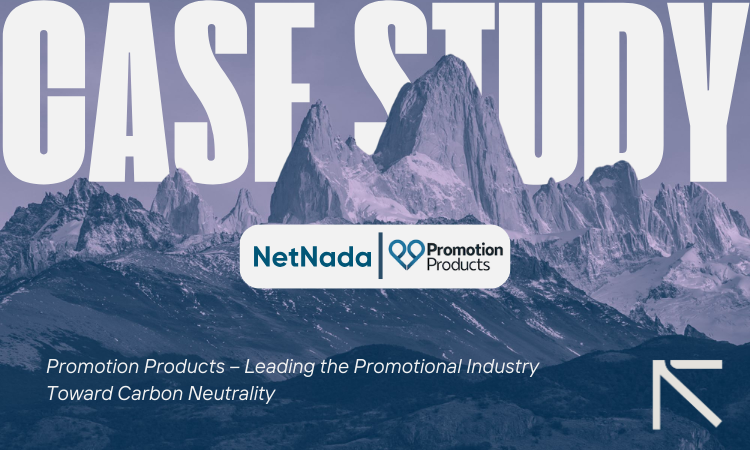
NetNada Case Study: Promotion Products – Leading the Promotional Industry Toward Carbon Neutrality
Our collaboration with Promotion Products, a pioneer in sustainable merchandise in Australia, showcases how data-backed carbon offsetting can elevate a strong sustainability strategy into a measurable and market-leading position.
Read post
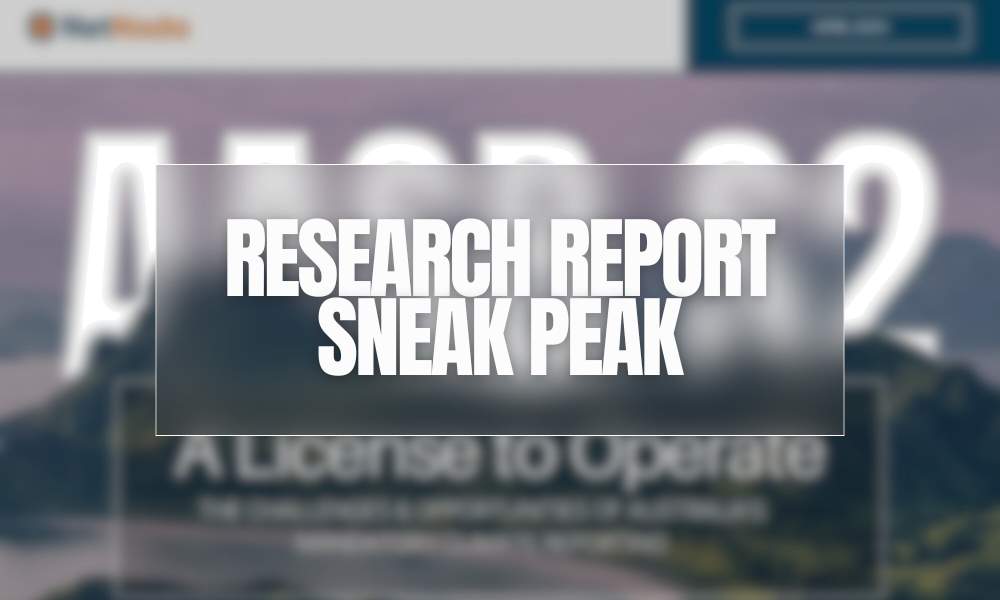
NetNada Research Reveals the Biggest Gaps in Climate Reporting
A new study by NetNada has found that most Australian organisations preparing for mandatory climate disclosure are focusing on the wrong areas. While companies are gaining confidence in emissions measurement, thanks to growing familiarity with carbon accounting, the real gaps lie elsewhere.
Read post
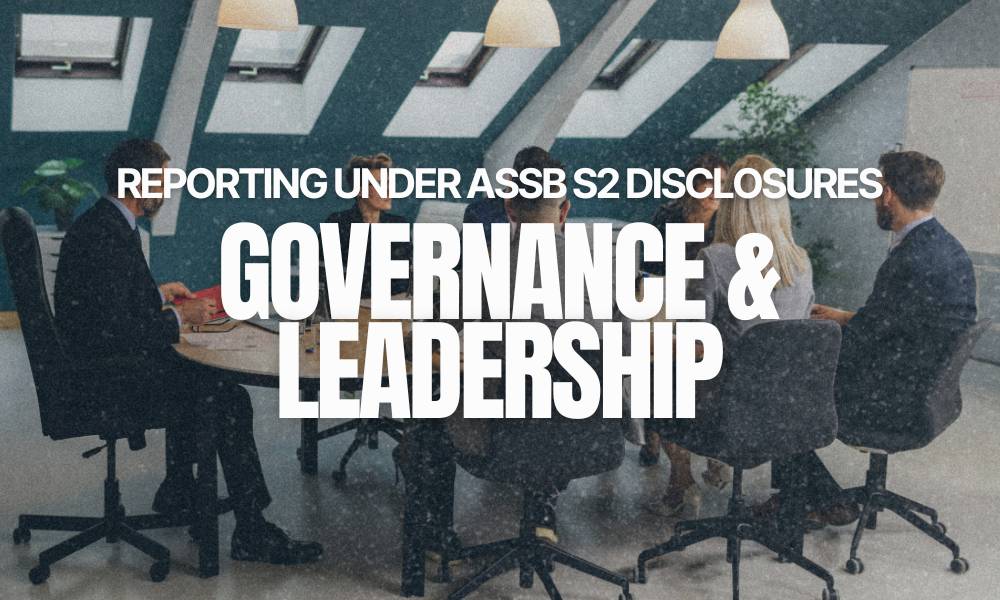
A Reporting Guide on Governance under AASB S2 Disclosures
As mandatory climate reporting becomes a reality for more Australian businesses, one area that often gets overlooked, but is absolutely critical, is governance. Here's what we learned in Session 2 of NetNada's Compliance Countdown.
Read post

Getting Started with Climate Disclosure: A Simple Guide to Reporting Readiness Assessment
Climate reporting readiness doesn’t require perfection on day one—it starts with understanding where you are now. Whether you're a Group 1 company preparing disclosures this year or a smaller supplier getting ahead of future requests, the key is to take practical, informed steps.
Read post

2025 Climate Change Snapshot for Australian Company Directors
Directors must prioritise the integration of the latest climate science into their strategic planning and risk management processes, undertake robust scenario analysis, and ensure they have the necessary expertise to navigate the complexities of a changing climate.
Read post

NetNada Case Study: Nature – Achieving Carbon Neutrality Through Sustainable Action
At NetNada, we help businesses track, manage, and reduce their carbon footprint through accurate emissions measurement and strategic sustainability initiatives. Our partnership with Nature, a leader in corporate sustainability, highlights their commitment to environmental responsibility and climate action.
Read post
NetNada Case Study: BOO Studio – Pioneering Sustainability in Design and Manufacturing
Our partnership with BOO Studio Pty Ltd, a leader in design and manufacturing, highlights their commitment to sustainability and data-driven environmental improvements.
Read post

How Can Hotels Be More Sustainable? The 7 Best Sustainable Hotels in the World
This blog explores what sustainable hotels are, highlights seven of the most sustainable hotels in the world, and provides actionable insights into how hotels can be more sustainable in their operations.
Read post
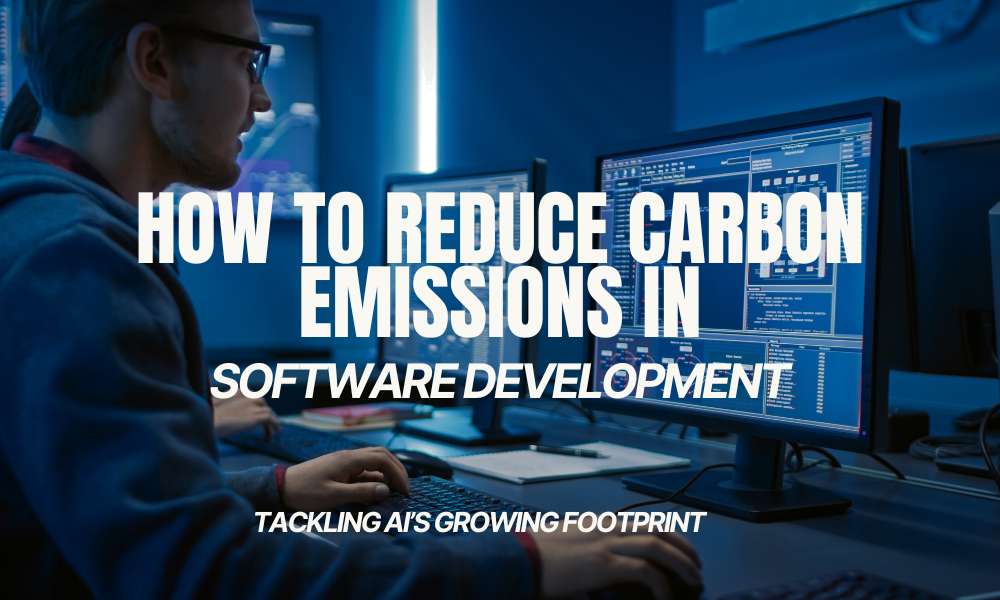
How to Reduce Carbon Emissions in Software Development: Tackling AI’s Growing Footprint
This article explores the intersection of carbon emissions for AI and software development, highlights key challenges, and outlines practical solutions to help the industry become more sustainable.
Read post

The Future of Climate Active: Where Will Corporate Climate Dollars Flow?
The Australian Climate Active program is at a crossroads. More companies are stepping away from the certification, citing concerns about the integrity of carbon offsets, legal risks, and a shift towards direct emissions reductions. With this transition, a major question arises: if companies are leaving Climate Active, where will their climate investment dollars go?
Read post
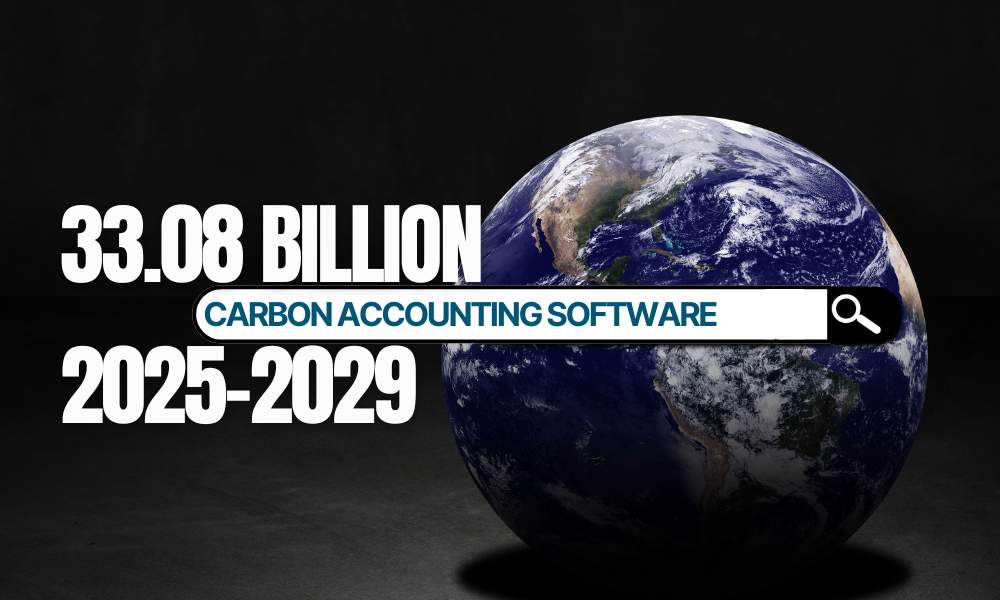
Research says Carbon Accounting Software Market is to Grow by USD 33.08 Billion in 2025-2029
The carbon accounting software market is experiencing explosive growth. As companies worldwide face mounting pressure to track, report, and reduce carbon emissions, the demand for automated, AI-driven emissions auditing solutions is rising sharply.
Read post
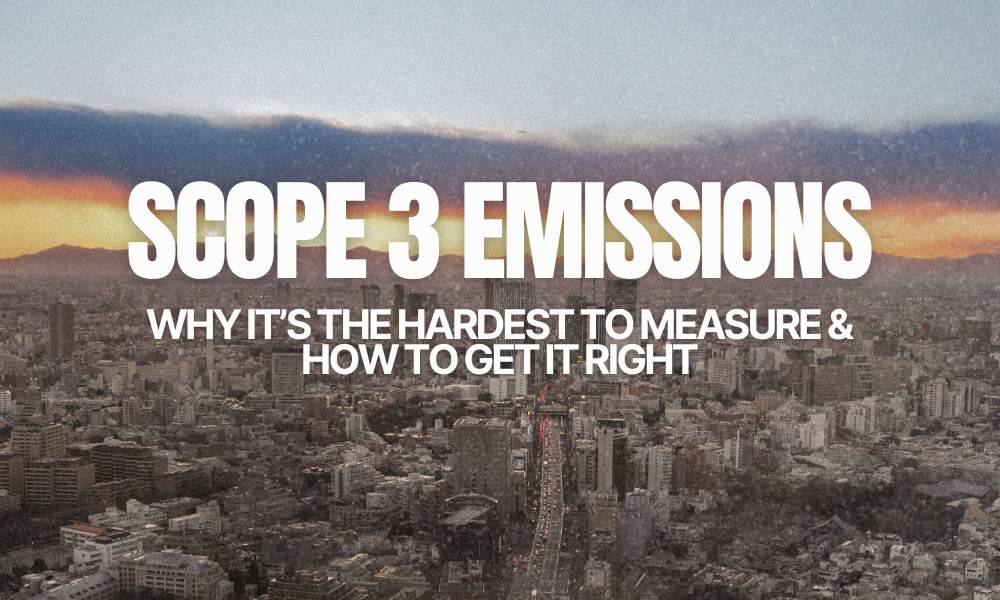
Scope 3 Emissions – Why It’s the Hardest to Measure & How to Get It Right
Why is Scope 3 so difficult to measure? And how can businesses ensure they track it accurately? This article explains what scope 3 emissions are and its 15 categories, what make them so difficult to measure, and what you can do to measure it right.
Read post

How to Build a Future-Proof ESG Strategy: A Step-by-Step Guide for 2025
This guide provides a step-by-step framework to help businesses build an ESG strategy that aligns with regulatory requirements, satisfies investor expectations, and drives long-term growth.
Read post
Top Sustainability Companies to Collaborate with for Climate Action
Whether you’re looking to reduce your carbon footprint, implement renewable energy solutions, or achieve carbon neutrality, working with specialized sustainability companies can make all the difference.
Read post

How to reduce carbon emissions in oil and gas industry
Decarbonising drilling operations, refining, and transport is now a business imperative as environmental regulations tighten and investors prioritise ESG commitments. This guide explores how oil and gas companies can reduce carbon emissions through technology, policy measures, operational efficiencies, and consumer engagement—ultimately paving the way for a sustainable energy future.
Read post

The 7 best carbon accounting software in Australia for 2025
Compare the features and benefits of the 7 best Australian carbon accounting software options.
Read post

NetNada Case Study: Liverpool Partners – Advancing Sustainability in Financial Services
Our partnership with Liverpool Partners, a leader in the financial services industry, demonstrates how businesses can integrate sustainability into their operations while maintaining transparency and efficiency.
Read post

Decarbonising Hard-to-Abate Sectors: Real-life Examples of Decarbonisation Strategies
This guide will break down the key concepts of decarbonisation, explain why certain industries are hard to abate, and explore real-life examples of strategies for reducing emissions in these high-emission sectors.
Read post
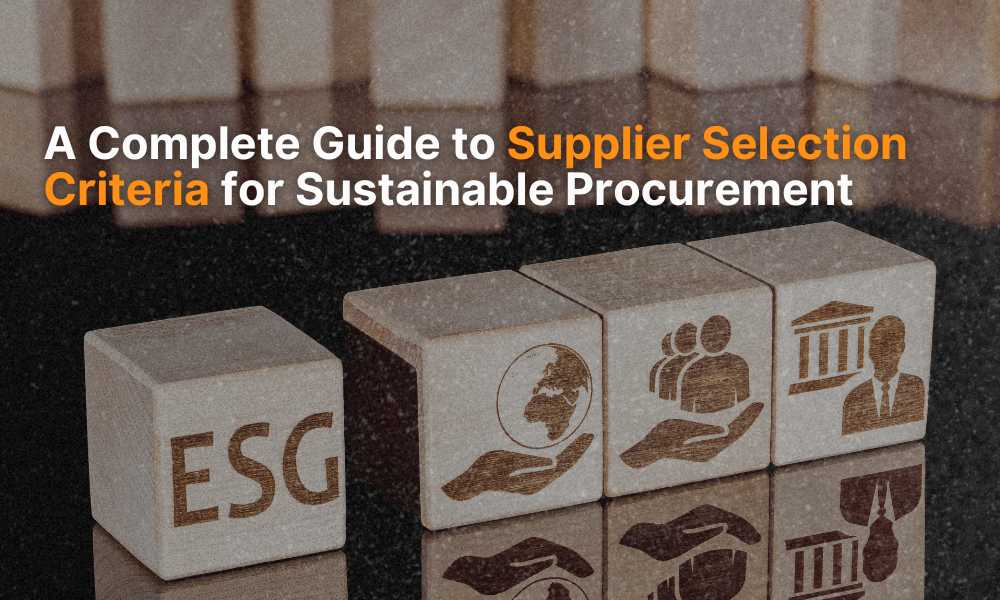
Supplier Selection Criteria for Sustainable Procurement: A Complete Guide
Sustainable procurement is a crucial aspect of corporate sustainability and competitive advantage. By developing and implementing a robust supplier selection criteria, organisation can contribute to a more sustainable future while ensuring a responsible and sustainable supply chain.
Read post
NetNada Case Study: Visual Traffic – Advancing Sustainability in Logistics and Operations
Our partnership with Visual Traffic Pty Ltd, a leader in logistics solutions, highlights the growing importance of sustainability in operational excellence. By leveraging detailed emissions tracking and strategic reduction initiatives, Visual Traffic has taken significant steps toward minimising their environmental footprint while maintaining business efficiency.
Read post

The ROI of Decarbonisation: How Much Does Carbon Accounting Cost?
This article explores how carbon accounting drives decarbonisation, the financial benefits, the cost of carbon accounting software for different company sizes, and the business case for investing in decarbonisation.
Read post

5 Questions You Need to Ask Your Suppliers for Your Emission Report
To build a sustainable supply chain, companies must ask suppliers the right questions. This article outlines 5 essential questions that will ensure accurate emissions tracking, better communication, and stronger collaboration to reduce environmental impact.
Read post

The Future of Vendor Sustainability: How to Get Your Team and Stakeholders Involved
To successfully integrate vendor sustainability into business operations, companies must align their strategies with stakeholder values, empower their teams, leverage technology, and foster a culture of sustainability. This article breaks down how to involve stakeholders effectively to create lasting impact and a more sustainable supply chain.
Read post
NetNada Case Study: CHOICE – Advancing Sustainability Through Transparent Reporting
CHOICE’s FY24 Carbon Emissions Summary Report marks significant progress in monitoring and managing their environmental impact while expanding the scope of their emissions reporting.
Read post

2025 Sustainability Trends in Australia
From regulatory shifts to technological advancements and changes in the sustainability job market, the landscape is dynamic and full of opportunities. For organisations new to sustainability, this blog unpacks the key trends in plain language and offers actionable insights to stay ahead.
Read post

How Trump’s Presidency Shapes the Climate Crisis and What Comes Next
Donald Trump’s presidency leaves a lasting mark on climate action—one defined by missed opportunities and a focus on fossil fuel dominance. Under his administration, policies that prioritise short-term economic gains continue to sideline the growing urgency of the climate crisis.
Read post

How to Reduce Carbon Footprint in Logistics: The Ultimate Guide to Sustainable Logistics
The logistics industry—spanning transportation, warehousing, and packaging—plays a major role in global emissions. This guide explores actionable strategies, real-world examples, and key innovations to help your business transition to carbon neutrality.
Read post

Wildfires and Urban Landscapes: Lessons from Los Angeles and Implications for Australian Cities
Los Angeles is currently facing one of the most devastating wildfire disasters in recent history. This serves as a stark warning for Australian cities like Sydney or Melbourne, which could face similar wildfire disasters. This blog explains the cause of the fires and breaks down the role of climate change in this disaster.
Read post

Simplifying the Mandatory Reporting Requirements: What You Need to Know
With Australia’s new mandatory sustainability reporting standards taking effect, many businesses are feeling uncertain about what is required and how to prepare. This short article aims to break down the requirements and timelines, demystify what needs to be reported, and provide a basic roadmap for preparation.
Read post
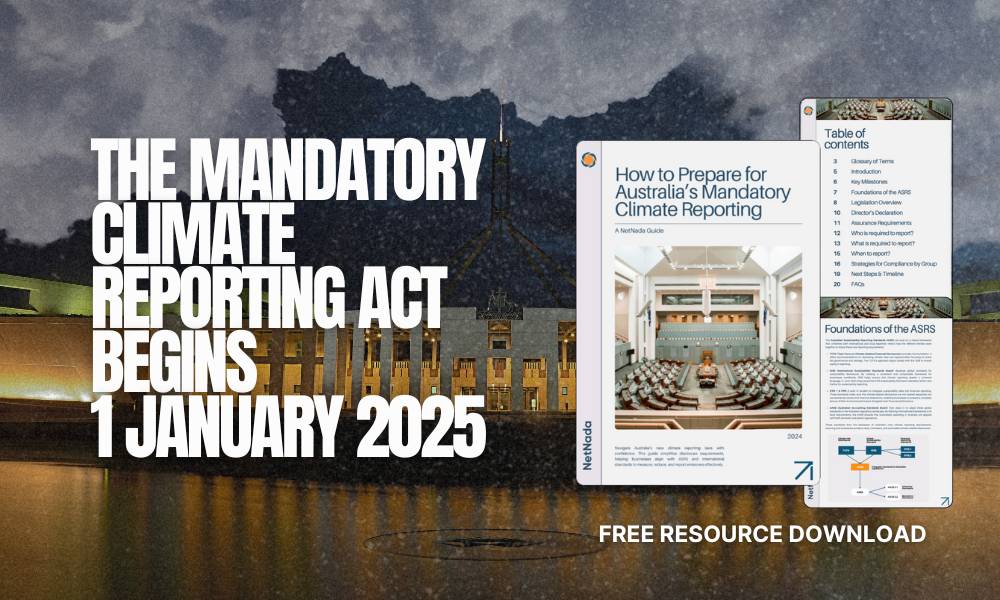
Australia’s Mandatory Sustainability Reporting Begins January 2025 [Complete PDF Guide]
Australia's mandatory climate and sustainability reporting begins 1 January 2025, and businesses should start taking action. Failure to comply could not only result in financial penalties but also harm an organisation’s reputation, both locally and globally. NetNada offers this free resource download: a complete guide on preparing for the mandatory legislation.
Read post

NetNada Case Study: Uluu – Scaling Sustainability in Innovative Materials
Our partnership with Uluu, a trailblazer in sustainable material production, highlights how precise carbon accounting can drive measurable progress. Uluu’s FY24 Carbon Emissions Summary Report demonstrates their commitment to transparency, operational efficiency, and supply chain engagement, resulting in a significant 71% reduction in their total emissions compared to FY23.
Read post

The Ultimate Guide to a Low-Carbon Holiday Season: How Individuals and Businesses Can Celebrate Sustainably
The holiday season is a time of joy, celebration, and connection. However, it also comes with a significant environmental cost. From increased energy use to waste generation and travel emissions, the carbon footprint of Christmas and New Year celebrations often skyrockets. Here’s everything you need to know about reducing carbon emissions during the holiday season, both personally and as a business.
Read post

NetNada Wrapped: Most Valuable Insights from 2024
As 2024 comes to a close, we find it inspiring to reflect on the extensive knowledge shared in our webinars and masterclasses throughout the year. This blog offers a recap of the most valuable insights from our sessions, answers common questions, and provides a roadmap to make 2025 even more impactful.
Read post

Entering a new era of Climate Reporting as Australian Government Passes Treasury Laws Amendment
Australia’s new Climate Reporting Act, part of the Treasury Laws Amendment (Financial Market Infrastructure and Other Measures) Act 2024, brings significant changes to how businesses report climate-related financial risks. Effective from 2025 for large companies and extending to 2027 for smaller ones, this law mandates detailed disclosures on climate risks and sustainability strategies. Learn how this legislation compares globally and what it means for your business in our concise guide.
Read post

6 Musicians Leading the Charge for Sustainability in the Music Industry
The global music industry’s carbon emissions might seem like a drop in the ocean compared to other sectors, but the visibility and influence of artists have a unique power. They can inspire millions to take action, from reducing personal carbon footprints to demanding systemic change.
Read post
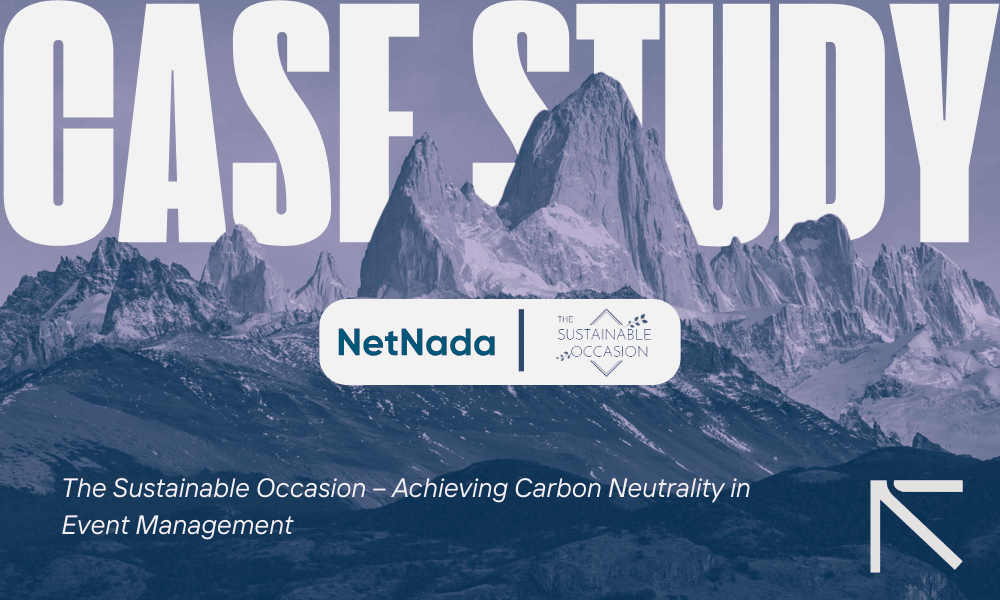
NetNada Case Study: The Sustainable Occasion – Elevating Eco-Friendly Event Management
The Sustainable Occasion, an award-winning event management agency, founded by Tai Ryan, focused on reducing the environmental impact of events. They have now achieved Carbon Neutrality in accordance with the NetNada Carbon Neutral Business standard.
Read post

5 Things You Need to Know About Fuel Efficiency Standards
With Australia set to roll out its New Vehicle Efficiency Standard on 1 January 2025, it’s the perfect time to understand what this policy means and why it’s crucial for the country’s future. Here are the five most important things you need to know.
Read post

Understanding the Basics of Supplier Selection
Choosing the right suppliers can have a significant impact on the quality, cost, and overall performance of your products or services. In this article, we will explore the most basic aspects of supplier selection from the importance of supplier selection, establishing the criteria for choosing the best suppliers, and delve into the steps involved in the selection process, discuss risk management strategies, and highlight the role of technology in supplier selection.
Read post

The Importance of Stakeholder Engagement in Business Success
This article delves into how stakeholder engagement drives success, explores its benefits, and provides actionable strategies to navigate challenges and ensure continuous engagement.
Read post

NetNada Case Study: McPherson’s Printing Group (MPG) – Advancing Sustainability in Print
As a leader in the print industry, MPG has intensified its commitment to environmental responsibility in FY24, expanding carbon accounting and adopting robust practices for reducing emissions across its operations.
Read post
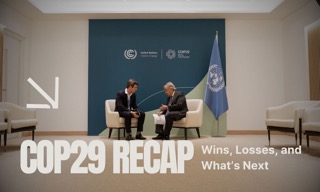
COP29 Recap: Wins, Losses, and What’s Next for Global Climate Action
This year’s summit focused on financing for developing nations, global carbon markets, and enhancing climate transparency. While progress was made in several areas, challenges remain, particularly in meeting global emissions targets.
Read post

NetNada Case Study: Windsor RSL Club – Leading Sustainability in Hospitality
Our partnership with Windsor RSL Club demonstrates how businesses in the hospitality sector can integrate sustainability into their operations. Windsor RSL’s FY24 Carbon Emissions Summary Report showcases their dedication to transparency, operational efficiency, and measurable progress towards a more sustainable future.
Read post

Reducing Hospital Carbon Footprint: 20 Sustainable Alternatives to Traditional Medical Supplies
This article lists 20 commonly used hospital items, offering environmentally sustainable alternatives that not only foster ecological responsibility but also improve the quality of patient care. By integrating these alternatives, healthcare facilities can not only showcase leadership in sustainability and set a benchmark for other industries, but also achieve big savings in combatting climate change.
Read post

How to reduce carbon emissions in construction
this sector is the largest greenhouse gas emitter making up a staggering 37% of global carbon emissions, significantly contributing to climate change. Addressing this impact is crucial for achieving global climate goals. By adopting innovative strategies, sustainable materials, and energy-efficient technologies, the construction sector can pave the way for a greener future.
Read post
Navigating the Challenges of Energy Transmission: Implications for Australian SMEs
Australian SMEs must navigate the complexities of energy transmission as the country transitions to renewable sources. Funding challenges, community acceptance, and reliability issues require strategic planning and efficient solutions for long-term success.
Read post
Unilever's Sustainability Wake-Up Call for Australian SMEs
SMEs must prioritize sustainability to meet consumer expectations. Former Unilever CEO, Paul Polman, emphasizes the need to go beyond basic commitments and close the gap between ambitions and actions for genuine impact.
Read post
Embracing Climate Change Policies: A Path to Sustainable Growth for Australian SMEs
Australia's commitment to climate change policies presents opportunities for SMEs. Embracing sustainability and renewable energy can position them as leaders, driving profitable growth and contributing to global climate action.
Read post
ESG Investing: Driving Sustainable Business Practices and Investor Confidence
ESG investing is crucial for businesses to succeed in a conscious marketplace. SMEs in Australia must adopt sustainable practices, attract ESG-focused investors, and communicate their efforts for long-term success and societal impact.
Read post
The NSW Energy Transition: Collaborating with the Private Sector for a Sustainable Future
The NSW Labor Government aims to achieve 12 gigawatts of renewable energy by 2030, urging private sector investment in new energy infrastructure for Australia's transition to clean energy.
Read post

NetNada Case Study: Precision Group – Driving Sustainability with Measurable Impact
Our partnership with Precision Group, a leader in logistics and supply chain services, highlights how actionable data can drive meaningful environmental progress. Precision Group’s FY24 Carbon Emissions Summary Report reflects their commitment to reducing their carbon footprint and advancing sustainability across their operations and supply chain.
Read post

Lee Zeldin’s EPA Nomination: A Signal of Change for U.S. Environmental Policy
Zeldin, a 44-year-old attorney and former Army lieutenant, has a history of supporting policies that prioritize economic growth and energy production over stricter environmental protections. He now leads the Environmental Protection Agency (EPA_.
Read post

Brewing a Sustainable Future: Coffee's Climate Challenge and Andrea Illy’s Vision
The coffee industry faces a brewing crisis as climate change threatens the cultivation of one of the world's most beloved beverages. With billions of cups consumed daily, coffee fuels a global industry valued at over $200 billion. Yet behind this success lies a precarious future, particularly for the millions of small-scale farmers who grow coffee in regions increasingly affected by drought, soil erosion, and financial instability.
Read post

The Trillion-Dollar Debate: COP29 and the Future of Global Climate Finance
The central question of climate finance has taken center stage in COP29, shaping debates and fueling tensions among nearly 200 nations. These discussions are pivotal for determining how the world will fund efforts to mitigate and adapt to climate change. However, the stakes are higher than ever, with rich and poor countries locked in a challenging negotiation over financial commitments.
Read post

Trump Wins, Planet Loses: The Climate Battle Ahead
With Donald Trump back in office, alongside Republican control of the Senate, many of the U.S.’s climate initiatives may be rolled back. The administration’s proposed policies could reshape climate and environmental regulations, affecting everything from air and water quality standards to renewable energy support.
Read post

NetNada at Sustainable Brands '24: Paving the Way for Accessible, Real Impact in Sustainability
NetNada proudly joined over 1,200 sustainability and brand leaders at Sustainable Brands 2024 (SB’24) in San Diego, California. Over four days, the conference convened changemakers from top brands, nonprofits, and innovators to tackle some of the most pressing environmental challenges of our time, including waste reduction, circular economy strategies, and carbon footprint reduction. Here are NetNada’s top takeaways from the event and how we’re helping businesses drive measurable change.
Read post

NetNada at VERGE 2024: Empowering Sustainable Action with Data-Driven Solutions
VERGE 2024, hosted by Trellis Group, gathered sustainability leaders, innovators, and policy advocates in San Jose to discuss and deploy solutions for a sustainable, net-zero future. As a company committed to democratizing climate action through our advanced carbon accounting platform, NetNada was excited to join this important event and connect with others who are equally dedicated to making meaningful environmental progress.
Read post

Sustainability Leadership in Business: Why It’s Needed Now More Than Ever After Trump’s Election Win
With changes likely to affect climate policy, clean energy initiatives, and environmental protections, businesses and organizations play a pivotal role in driving progress toward a sustainable future. In this blog, we’ll explore why strong business leadership is essential for sustainability and how companies can take meaningful action.
Read post

NetNada Case Study: Yellowbox – Scaling Sustainability in Technology for FY24
Our work with Yellowbox, a tech industry leader, underscores our commitment to creating meaningful change in environmental impact. In FY24, Yellowbox strengthened its sustainability practices and expanded its environmental impact reporting, marking significant progress in their journey toward reducing their carbon footprint.
Read post

The Irony – Australia's Most Sustainable Company is an Explosives Manufacturer
It's ironic how Australia’s most sustainable company isn’t a tech firm or a renewable energy pioneer—it's a global leader in mining explosives and blasting solutions. This achievement sparks a key question: if an explosives manufacturer can prioritise sustainability, what’s stopping companies in other sectors from doing the same? In this article, we will explore learnings and strategies from the country's most sustainable company.
Read post

Mount Fuji's Snowless Winter: A Clear Sign of Climate Change
Traditionally, snow first blankets Mount Fuji by early October, a pattern observed since 1894. However, the summer of 2024 was extraordinarily hot, delaying the appearance of snow and marking the longest snowless period on record. This disruption to the usual snow cycle is a visible reminder of global warming's far-reaching effects, underscoring the urgency of climate action to protect our environment and heritage.
Read post

How to Create Sustainable Events: Leveraging the Climate Active Carbon Neutral Standard
Australia’s Climate Active Carbon Neutral Standard for Events provides a framework that helps organisers understand, calculate, and reduce their events' carbon emissions. While certification under Climate Active is beneficial, this standard is an invaluable tool for event organisers to follow whether or not they pursue formal certification.
Read post

The Truth About Solar Power: Is it Really Worth It?
Solar power has been around for a while, yet many still don’t fully understand its potential. It’s more than just panels on rooftops; it’s a renewable energy source that can help reduce carbon emissions and save money. But, is it really all it’s cracked up to be? In this blog, we’ll dive into the lesser-known facts about solar power, answering common questions about its benefits, drawbacks, and why it’s not yet the most widely used energy source.
Read post

NetNada Case Study: ASI Solutions – Leading Sustainability Efforts in Technology and Operations
Partnering with NetNada, ASI Solutions took significant steps to measure, manage, and report its carbon footprint, setting a powerful example for the industry. This article shows how NetNada helped ASI Solutions achieve its climate goals through comprehensive carbon emissions analysis and actionable sustainability strategies.
Read post

Anticipating COP16 and COP29: A Deep Dive into the Future of Biodiversity and Climate Action
As the world confronts pressing environmental challenges, two pivotal conferences stand at the forefront: COP16 and COP29. Despite sharing the "COP" designation, these gatherings serve unique purposes, each focusing on different facets of the global environmental crisis. While COP16 centers on biodiversity, COP29 addresses climate change. However, these issues are deeply interconnected, and their combined outcomes will significantly influence our planet's future.
Read post

Join the Movement: NetNada and BBP Pioneering Sustainable Local Business Solutions
NetNada is excited to announce our partnership with the Better Business Partnership (BBP), supported by Willoughby City Council, Ku-ring-gai Council, and North Sydney Council. Together, we’re empowering local businesses to adopt sustainable practices and align with the Resilient Sydney program.
Read post

How NetNada Helped RNTR Achieve Significant Carbon Savings and Boost Sustainability Credentials
RNTR, a leading rental service company, was determined to improve its sustainability performance and sought ways to better understand and communicate its environmental impact. To achieve this, RNTR partnered with NetNada, leveraging our expertise in carbon emissions analysis to calculate, quantify, and report their carbon savings.
Read post

Poor ESG Performance: Why Customers Are Walking Away
In this blog, we will explore how poor ESG performance can lead to significant customer drop-off and declining investments, and why proper and transparent ESG practices are essential to maintaining long-term financial health.
Read post

California’s Mandatory Climate Reporting: What You Need to Know About SB 253, SB 261, and SB 219
California has taken a bold step in holding businesses accountable for their environmental impact. With the enactment of Senate Bills 253 (SB 253) and 261 (SB 261) as part of the Climate Accountability Package, along with the amendments from SB 219, we’ll explain what these laws mean for businesses, what the reporting requirements are, and how companies can comply.
Read post

Earth’s Vital Signs are Weakening: How You Can Act Now to Prevent Planetary Health Breakdown
As the Earth approaches multiple critical thresholds, the urgency for climate action has never been clearer. Business leaders play a crucial role in addressing climate change, cutting carbon emissions, and advancing decarbonisation. This article will explore what planetary boundaries are, how climate change is driving these challenges, and what businesses can do to help protect the planet.
Read post
3 Climate Disasters in 2024 Pleading for Climate Action: Urgent Lessons for Businesses
In this blog, we’ll explore three major climate disasters of 2024—Hurricane Helene, Typhoon Gaemi, and the Nepal floods and landslides—and explain how they are directly linked to the urgent need for climate action. We’ll also explore how businesses can take responsibility for their emissions using a carbon accounting tool like NetNada.
Read post

The Impact of Amazon Prime Big Deal Days on the Planet
Amazon's Prime Big Deal Days 2024 (October 8th-9th) kicks off, with millions of shoppers taking advantage of deep discounts. However, behind the excitement lies a significant environmental cost—one that both businesses and consumers must consider.
Read post

NetNada Empowers Zip Co in Global Carbon Emissions Reporting and Compliance
Zip Co, an ASX-listed tech company, partnered with NetNada to streamline its carbon emissions measurement and reporting across Australia, New Zealand, and the United States. Faced with complex compliance requirements, NetNada provided tailored, data-driven solutions that ensured accurate reporting for CDP, TCFD, and annual submissions. The collaboration not only helped Zip Co meet global sustainability standards but also improved internal efficiency, positioning the company as a leader in environmental performance.
Read post

Turning the Tide: How Business Owners Can Address Extreme Weather After Hurricane Milton
Hurricane Milton serves as a stark reminder of the devastating effects of climate change. As extreme weather events become more frequent and severe, businesses must take action to reduce their carbon emissions. By embracing carbon accounting and implementing sustainable practices, companies can play a key role in mitigating the impact of climate change and building resilience for the future.
Read post
NetNada Client Case Study: Ivy Precinct’s Journey to Sustainability in Carbon Reduction and Waste Management
The Ivy Precinct, Sydney partnered with NetNada to tackle significant sustainability challenges as part of its commitment to Merivale's 2030 net-zero goals. Facing complexities in managing greenhouse gas (GHG) emissions and waste streams, the precinct worked with NetNada to implement a three-pronged strategy: comprehensive emissions and waste data analysis, waste stream optimization, and actionable insights for reducing CO2 emissions. Read this story to see the results.
Read post

Vanguard Investments Lost $12.9 Million in Penalty for Greenwashing - How to Ensure your Business is Safe
Vanguard Investments Australia was hit with a $12.9 million penalty for making misleading claims regarding their environmental, social, and governance (ESG) funds. It was found that they falsely promoted their Ethically Conscious Global Aggregate Bond Index Fund as excluding industries like fossil fuels–when in reality, the majority of the fund was not screened for these criteria. This case serves as a stark reminder that greenwashing—misleading marketing of environmental claims—can have serious legal and financial consequences. Here's how you can avoid the same fate.
Read post

Carbon Jargons: Carbon Accounting Glossary
In this page you will find all the definitions of essential terms related to Carbon Accounting. It is a key learning resource to accompany participants in our Carbon Accounting 101 Webinar.
Read post

California Sues ExxonMobil for Misleading Claims on Plastic Recycling: Is it Greenwashing?
The lawsuit claims that ExxonMobil knowingly misled the public into believing that recycling was a viable solution to plastic waste, despite being aware that most of the plastic would not be recycled. This case brings attention to how large companies often shape sustainability narratives to their advantage, raising the question: Is this an example of greenwashing?
Read post

Climate Week 2024 From Down Under to Wall Street: How Australia's Climate Regulations Can Inspire Global Sustainable Investment
This blog delves into how Australia’s approach can inform and inspire sustainable finance practices worldwide, illustrating key lessons and strategies for advancing the transition to a low-carbon economy.
Read post

10 Expert Insights for Climate Week NYC 2024: How Carbon Accounting Drives Decarbonisation Across Key Event Themes
Climate Week NYC 2024 event themes—ranging from energy to transport, and recently including health—highlight critical areas where carbon accounting and decarbonisation strategies can make a powerful impact. This article presents key insights that will help you navigate these themes, spark meaningful conversations, and network with hundreds of like-minded professionals in the event.
Read post

How to reduce carbon emissions in event and entertainment
Hosting events and providing entertainment play an important role in our lives, but they also have a significant environmental impact. Carbon emissions from these activities contribute to climate change and pollution. However, by adopting sustainable practices and embracing green technologies, we can reduce the carbon footprint of events and entertainment. In this article, we will explore the impact of events and entertainment on carbon emissions, strategies for reducing them, and the use of green technologies. Additionally, we will discuss the role of policies and regulations in promoting carbon emission reduction in this industry.
Read post

Calculating Emissions for Events: A Beginners Guide
Sustainable event organisers who are looking to host environmentally responsible events must strive to adhere to the Climate Active Carbon Neutral Standard. Doing so requires a comprehensive understanding and calculation of carbon emissions produced throughout the duration of the event from start to finish. This article serves as a beginner's guide, highlighting the importance of calculations and the specific steps of analysing it.
Read post

Navigating Australia's Mandatory Climate Reporting: What Your Business Needs to Know
In this article, we cover the main points businesses need to understand about climate reporting in Australia to help them adapt and succeed in this new era of responsibility.
Read post

Hack Service Sustainability with Reduction Strategies that Work
Making the healthcare and hospitality industry more sustainable is not only good for the environment and people, it also saves A LOT of money and boosts the brand image. As more people want eco-friendly options, those who cut waste and lower carbon emissions stand out as eco-leaders. This guide offers easy-to-follow steps like checking how you use energy, starting waste reduction plans, and saving water.
Read post


.png)
